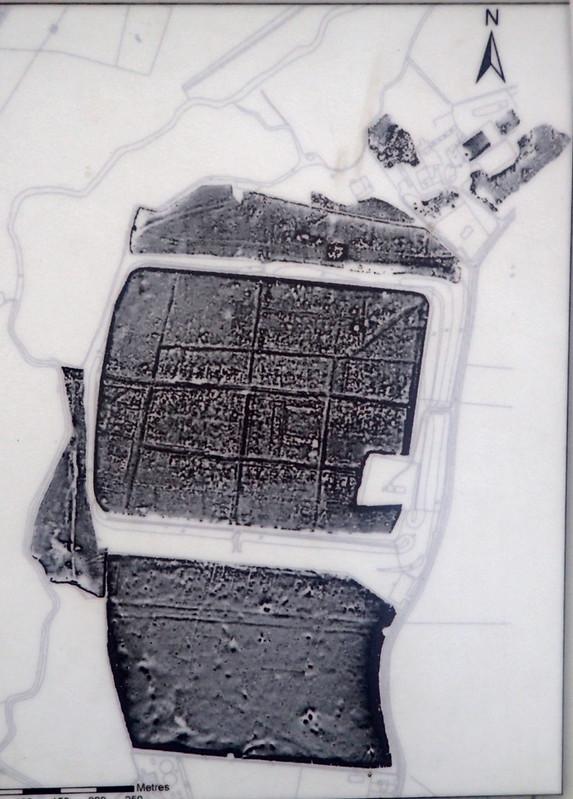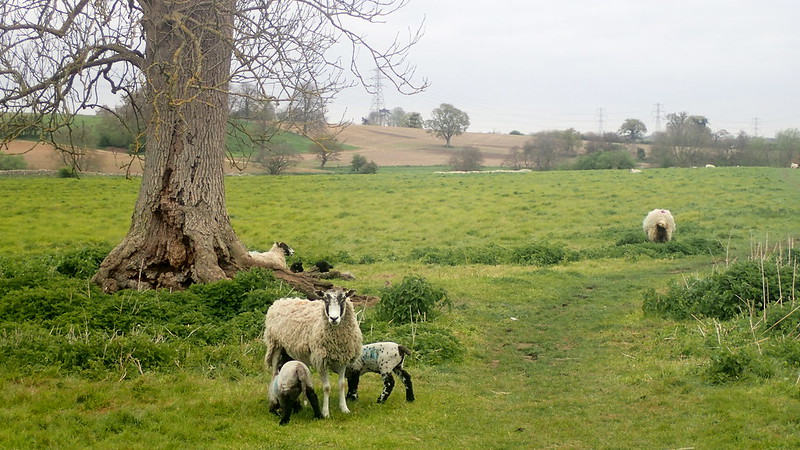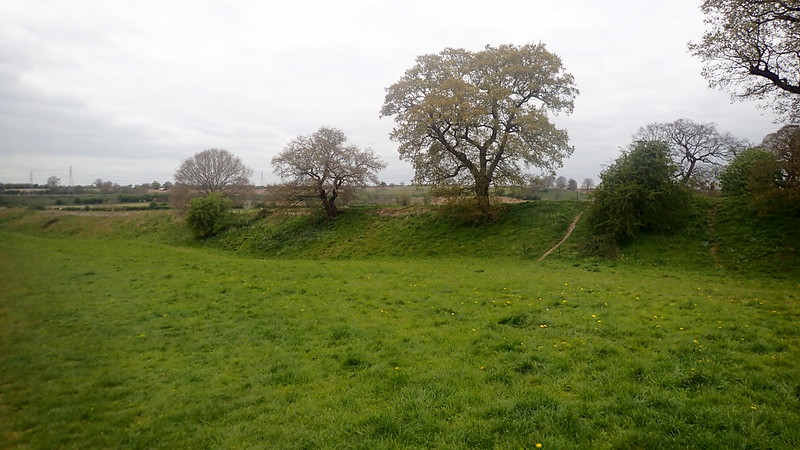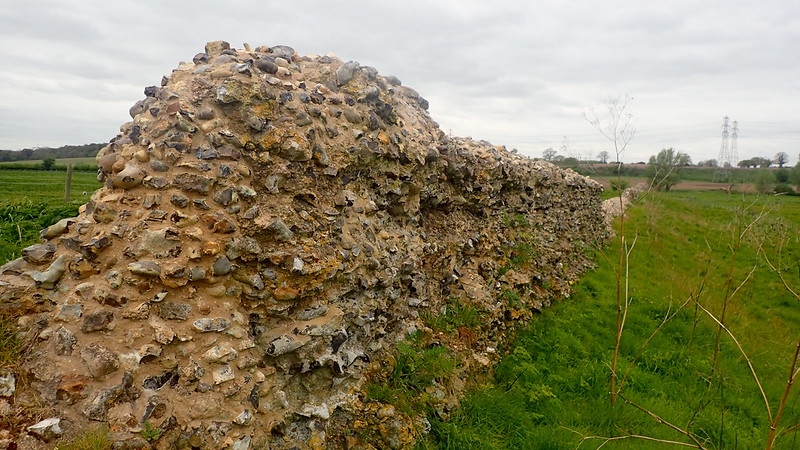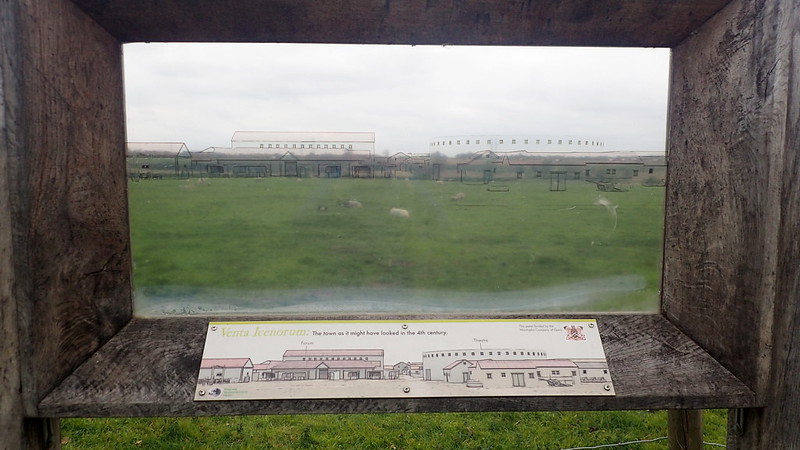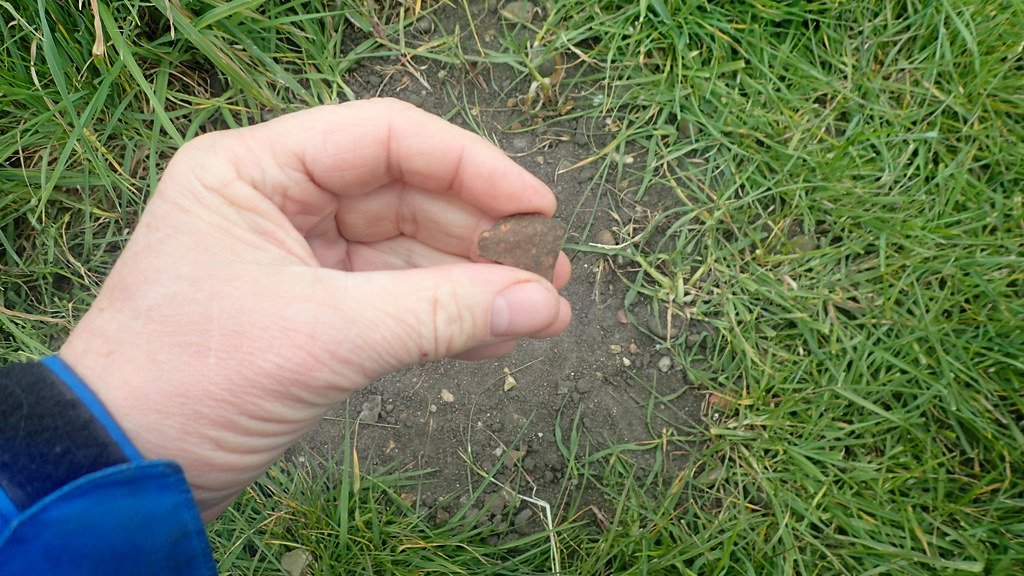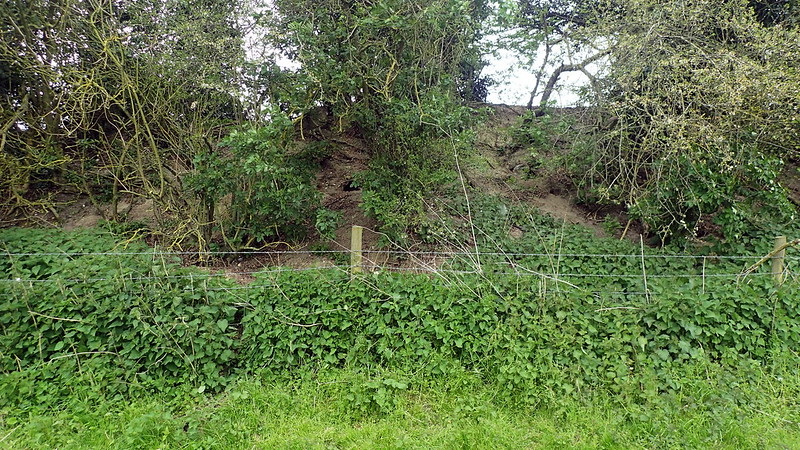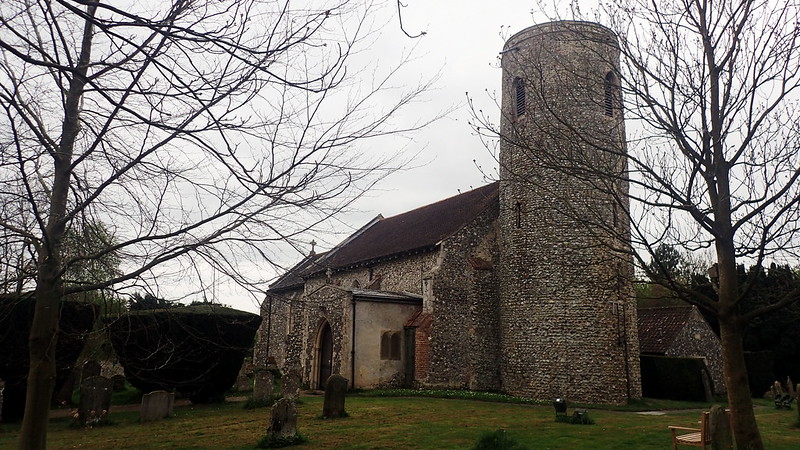
St Mary's, Long Wittenham, Oxfordshire. By John Salmon, CC BY-SA 2.0, https://commons.wikimedia.org/w/index.php?curid=12512201
I'm ready to accept the connection. I've talked to people with more expertise than me concerning the confusion over the ages of my couple on the census. I've found the baptism on a transcription CD for Long Wittenham from Oxfordshire FHS. It's perfect. The cream on the cake though, is that I found someone else with a tree on Ancestry.com, that had already come to the exactly same conclusion. Okay, I don't normally take much notice of trees on Ancestry.com, but this one appeared well researched, and I've both checked and added to the details on that tree. Third time lucky.
G.G.G.G.G.G. Grandparent Generation
I can now go back to an ancestor named John Brooker, there's a few of them, so let's call him John Brooker I. He might have been born somewhere in the Thames Valley, during the early 1720's. He married a Mary, my G.G.G.G.G.G Grandmother Brooker. They settled (if they didn't originate there) at Long Wittenham in Berkshire, near to the River Thames. She gave him at least six children between 1749 and 1763: Mary, Anne, John, Edward, Martha, and Sarah.
G.G.G.G.G Grandparent Generation
Their son, Edward Brooker (or Brucker), was our ancestor. He was baptised at Long Wittenham on the 16th January 1757. When Edward was 29 years old, he married local girl Elisabeth Gregory, on 24th October 1786, at Long Wittenham. So you see, that photo above of the church of St Mary's there, is a part of the story. Our 18th Century Brooker ancestors were baptised, and sometimes married there. Some of them are also buried in that church yard. Indeed, that was where Edward himself later ended up, when he was buried there 23rd September 1832, having died at the age of 75 years.
His wife Elisabeth had also been born at Long Wittenham, the daughter of a William and Anne Gregory. She had been baptised at the above church on 15th November 1761.
Edward and Elisabeth Brooker appear to have lived in Long Wittenham all of their life. They had five children baptised at St Mary's between 1789 and 1796: John, Dinah, James, Richard, and Joseph.
G.G.G.G Grandparent Generation
Our ancestor John Brooker II was baptised on 18th January 1789. At the age of 25 on 31st October 1814, John married Elisabeth Seymore at the nearby market-town of Abingdon-on-Thames, in Berkshire. Elisabeth was born circa 1797 at a village north of the Thames in Oxfordshire, that in later life on a census, she referred to as Drayton. Most likely, this is the village of Drayton St Leonard. It's only a mile or two across the river from Long Wittenham.
I should at this point explain why I sometimes refer to long Wittenham as in Berkshire, and at other times a in Oxfordshire. Historically, it is a Berkshire parish, and is on the south side of the Thames. However, in 1974, it was transferred to Oxfordshire County Council.
The couple moved, and they moved around twelve miles. That chucked my attempts to trace them for a long time. They moved to Rotherfield Peppard in South Oxfordshire, down river. They turned up there on the 1841 census. They must have moved soon after marriage, as their children were born in Oxfordshire. John was employed as a labourer, most likely a farm worker. Between 1815 and 1836, they had seven children: Frederick, Phoebe, John, Elizabeth,Mattew,Emma, and William Brooker. Later in life, they moved to the next village of Rotherfield Greys. It was there on the 1861 census, that I finally picked up their origins. John died in 1867.
G.G.G Grandparent Generation
Our ancestor, John Brooker III was baptised at Rotherfield Peppard on 23rd April 1820. In the 1841 census, he turns up in a house of multiple adults on Hamstead Farm in the next parish of Sonning Common. Although technically north of the Thames, and in Oxfordshire, it actually belonged to a parish south of the river in Berkshire. John was an agricultural labourer.
On the 1st February 1845, at nearby Shiplake in Oxfordshire, John married Mary Ann Edney. They lived at times in both the South Oxfordshire parishes of Shiplake, and of Harpsden, both close to the town of Henley-on-Thames. Between 1847 and 1870, Mary gave birth to at least ten children: Hannah, Charles, Arbina, Phoebe, Emma, Thomas, William, Henry, Alice, and Ellen Brooker.
Mary Ann Brooker herself, was the daughter of Thomas Edney, a thatcher at Shiplake, and his wife Hannah (nee Hedges).
John lived to a good age. During the 1901 census, he was living with his eldest daughter, Hannah Belcher and her husband. He was 81 years old, and working as a shepherd. John finally passed away in 1912, at the age of 91 years.
G.G Grandparent Generation
Our ancestor Henry Brooker was baptised at Harpsden on 5th December 1863. An early appearance as a young man on the 1881 census, lists him as a farm worker, at Harpsden Bottom Cottages.
Henry had itchy feet though. He wanted to move right down the river, into London. A few years later, on the 29th September 1883, Henry married Elizabeth Rosina Shawers, at Fulham, London. Elisabeth was born at Haggerstone, London on 11th September 1858. her father, Henry Shawers was a harrow weaver, but her mother Elisabeth (nee Durran) also hailed from Oxfordshire. I've traced her ancestors to the area around Woodstock and Deddington.From Fulham, the couple next moved to Bethnal Green, and then to Deptford. I only know of two children, born between 1884 and 1887. Perhaps something prevented Elisabeth from carrying again. Their children were: John Henry Brooker, and Elisabeth Rosina Brooker.
They later moved down river yet again, to Lewisham. Henry worked mainly as a carter, driving a horse and cart in the East End of Victorian London. I've long suspected that he may have worked on the docks. However, by 1908, he was recorded as a store keeper.
The above photograph is of our great grandfather's sister, Elisabeth Rosina Brooker.
I don't yet know when or where Henry passed away. However, I do know that Elisabeth spent her last days living with her son at Sidcup, Kent. She was buried there on 2nd May 1939.
Great Grandparent Generation
Our Ancestor John Henry Brooker was born 25th June 1884 at Deptford, London. However, the rest of the story - still needs to be written, or has already been written in other posts.
John Henry Brooker and his partner Mabel Tanner in 1933.
The Y chromosome.
I have so far been tested to have the Y haplogroup L-M317, or L1b if you prefer. It means nothing, except that is incredibly rare and enigmatic sub clade, particularly in NW Europe. It may mean that at some point, my paternal line lived in Eastern Anatolia, south of the Causacus, or near to the Black Sea. I'm waiting for further testing, but it looks quite possible, that it is linked to the Pontic-Greek ethnicity that lived in that area. I have no autosomal evidence of anything from that part of the world, so it is likely to have been in England or NW Europe for quite some time. It might for example, have arrived here via the Roman Empire.
Why mention that now? Because until it meets an NPE (non parental event), it should follow the surname line. If I ever met another Y chromosome descendent of my Thames Valley Brookers - another person that has descended directly through a strictly father-to-son paternal line, I'd love to know if they've had their Y haplogroup predicted.
